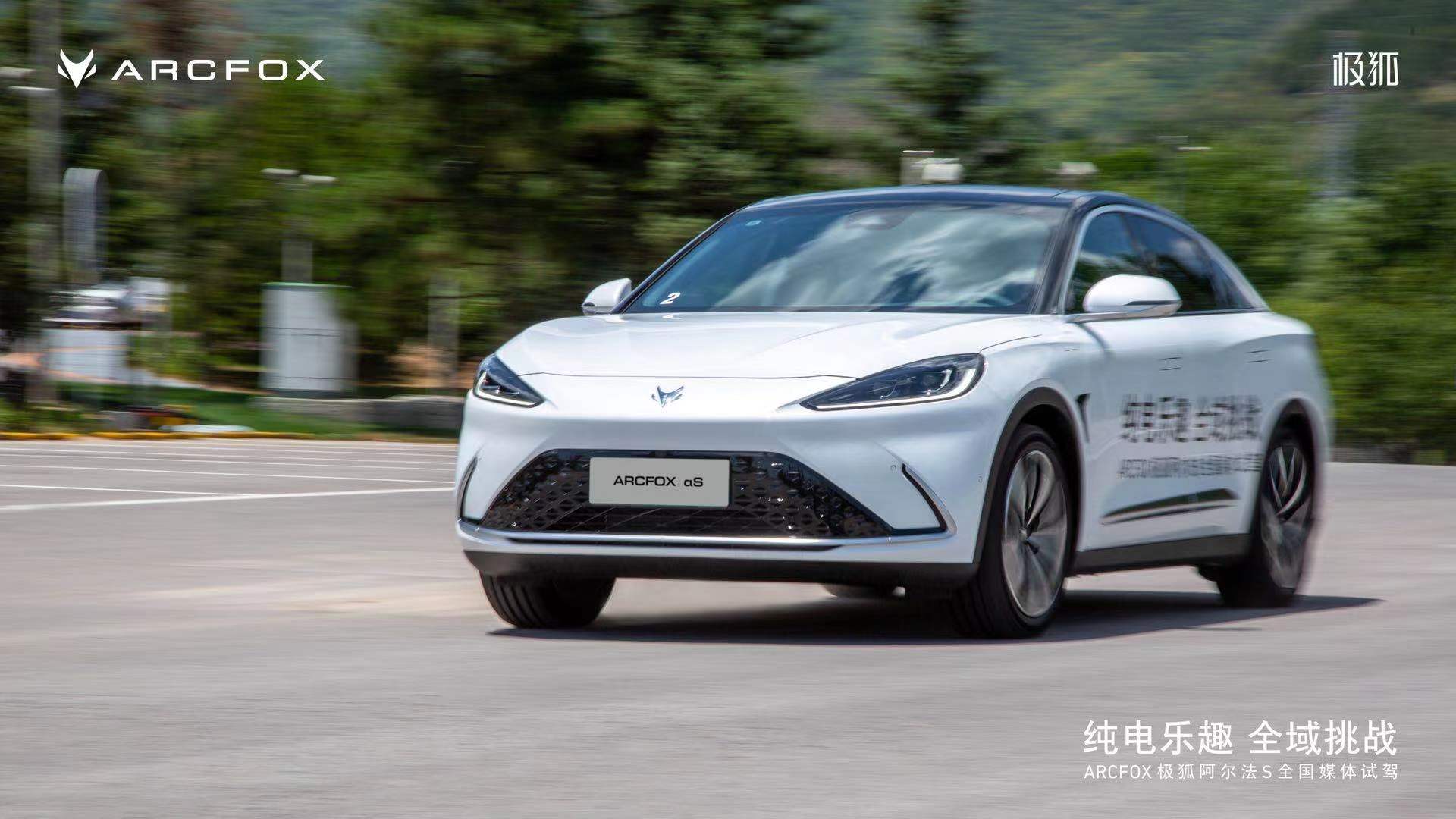As I expected, after a day of test driving, the Alfa S has refreshed the media’s perception of the brand, especially for those who were test driving for the first time.
Despite the organizers’ unabashed boasting about the superb level of the Alfa S chassis during the workshop briefing prior to departure, it wasn’t until everyone had driven 100 kilometers on mountain roads that they truly appreciated its prowess.
Surprise could be described as the most commonly used adjective when discussing the Alfa S driving experience that day. However, for me, there were not many unexpected feelings during this test drive. Instead, I felt more familiar with it.
Six Months Before and After
The Story of Alfa T
Last year on December 12th, I participated in a test drive of the ARCFOX Alfa T. Like the Alfa S that was test driven this time, it had an excellent chassis and I was deeply impressed after the test drive.
In terms of driving experience, the Alfa T was probably the best self-branded SUV that I had ever driven at that time. In my view, this was both rare and worthy of praise. In terms of mechanical qualities, many of the advantages of Alfa T even reminded me of the Mercedes EQC with its great chassis texture. However, before the test drive, due to the impact of the network reputation of BAIC new energy cars, I had almost no expectations for the Alfa T. In that kind of huge contrast, I later wrote an article about the Alfa T, “You may only want to hear falsehoods about this car.”
In the article, I highly praised the Alfa T’s ride comfort, driving experience, body strength, interior materials, etc., but I also pointed out several issues:
- The car-machine interaction was inconvenient, the UI design was outdated and not beautiful.
- Some of the interior design was abrupt, and the overall coherence wasn’t great. It had a cheap feeling visually.
- The exterior design was distinctive but not beautiful enough, lacking aesthetics.
- The abilities of the driving assistance system were average.
So, during this test drive of the Alfa S, I paid special attention to these aspects.
Further Driving Quality
First, the good news is that the mechanical qualities of the Alfa S continue to have the high-level benchmark of the Alfa T. Additionally, due to the Alfa S’s lower center of gravity as a sedan, its body roll is reduced when taking bends, and its dynamic response is slightly faster. These driving experiences are what make this car so impressive.Alpha S’s filtering of road bumps is very proper, whether it is high speed or low speed, small road joints or large speed bumps, the suspension system of this car can always resolve those uncomfortable impacts. It is like a Tai Chi master driving on the road, gracefully accepting every punch from the ground, and only the wheels, which are closely attached to the road surface, move up and down to dispel the brute force, while the body only experiences elegant and gentle undulations.
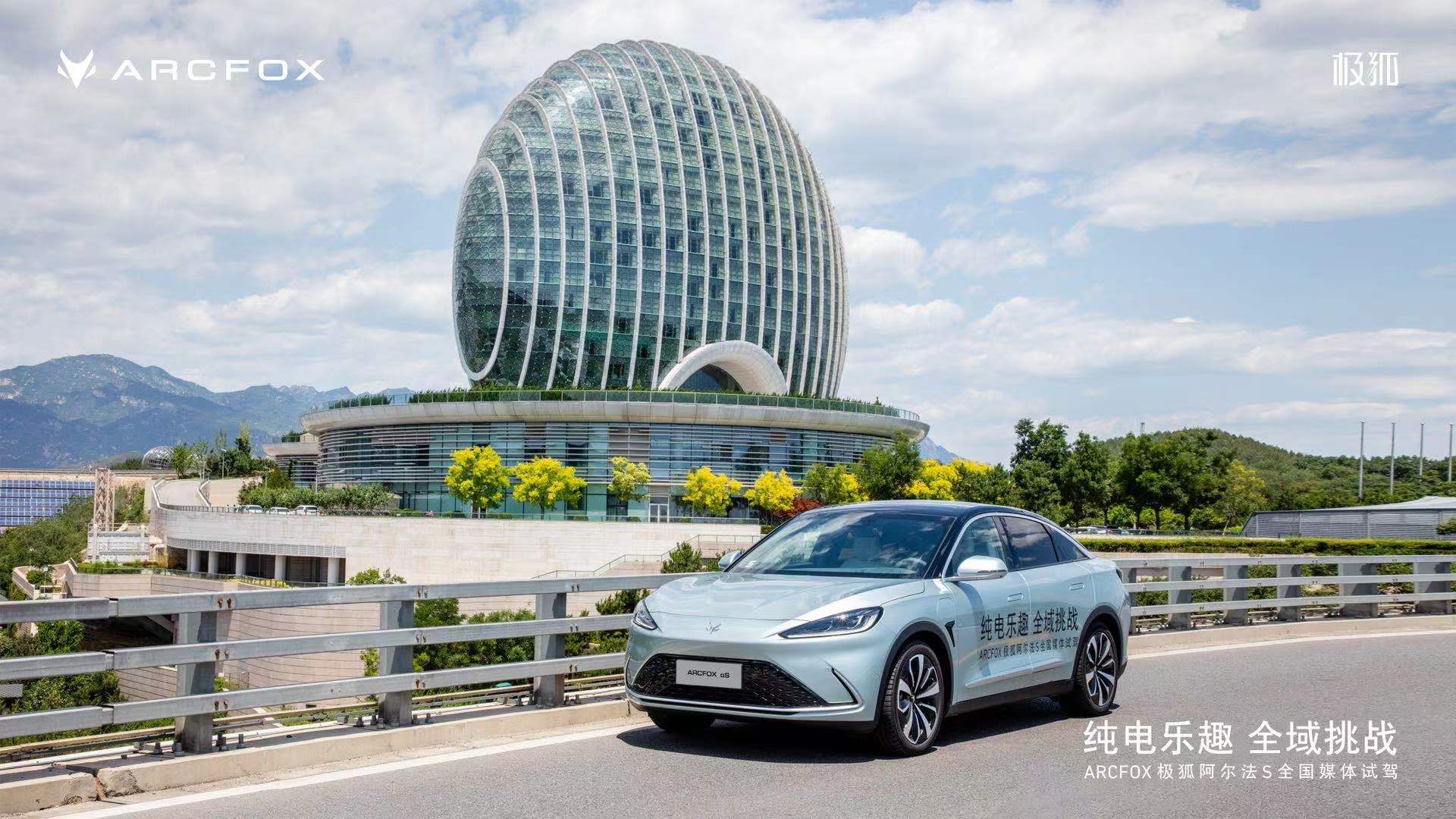
However, this softness is not like the weakness of a delicate woman; as the angle of the steering wheel in high-speed turns gradually increases, the Tai Chi master, Alpha S, will show its balance of rigidity and flexibility. With an acceptable amount of tilt, the tracking performance of the front of the car remains stable, and even as the lateral acceleration becomes stronger, the expected understeer does not immediately appear.
The calm and confident performance of Alpha S under moderate to intense driving is what makes it attractive; its chassis behavior, which excels under mild to intense driving, gives off an aura of inscrutable ability. But this feeling also makes it difficult to estimate the performance limits of Alpha S; it is not its strong suit to drive on the edge of its limits. Instead, its true strengths are within its ability range: its temperament and expressiveness. In my opinion, this type of chassis tuning is exactly what a luxury sedan needs.
This kind of textured chassis, coupled with linear and low-latency pure electric power, allows me to confidently say that Alpha S exhibits more luxury and sophistication in driving than its peers such as the P7, Model 3, and Han EV.
This was actually within my expectations. What I did not anticipate was that during the 100-kilometer test drive, which had three people on board and automatic air conditioning at 22 degrees Celsius for the entire trip, Alpha S showed an almost 1:1 power consumption ratio when frequently overtaking on mountain roads.
Then there is the second good news.
Interior quality takes a big leap forward
During the test drive of Alpha S, the most significant improvement to me was the language and atmosphere of the interior design. In my opinion, the interior design of Alpha T was one of the biggest regrets of the entire car, as there was an obvious feeling of “discontinuity” between the different interior areas.
For example, the center console of Alpha T has a straight-line theme, but the passenger side has irregular, fishscale-shaped RGB ambient lighting, creating a sharp contrast in design language, and without a sense of symmetry.
Another example is that the door trim panels have a silver base color while the entire vehicle has black as its main color, which makes the intricate pattern on the panels, dense with cross-line textures, very conspicuous.
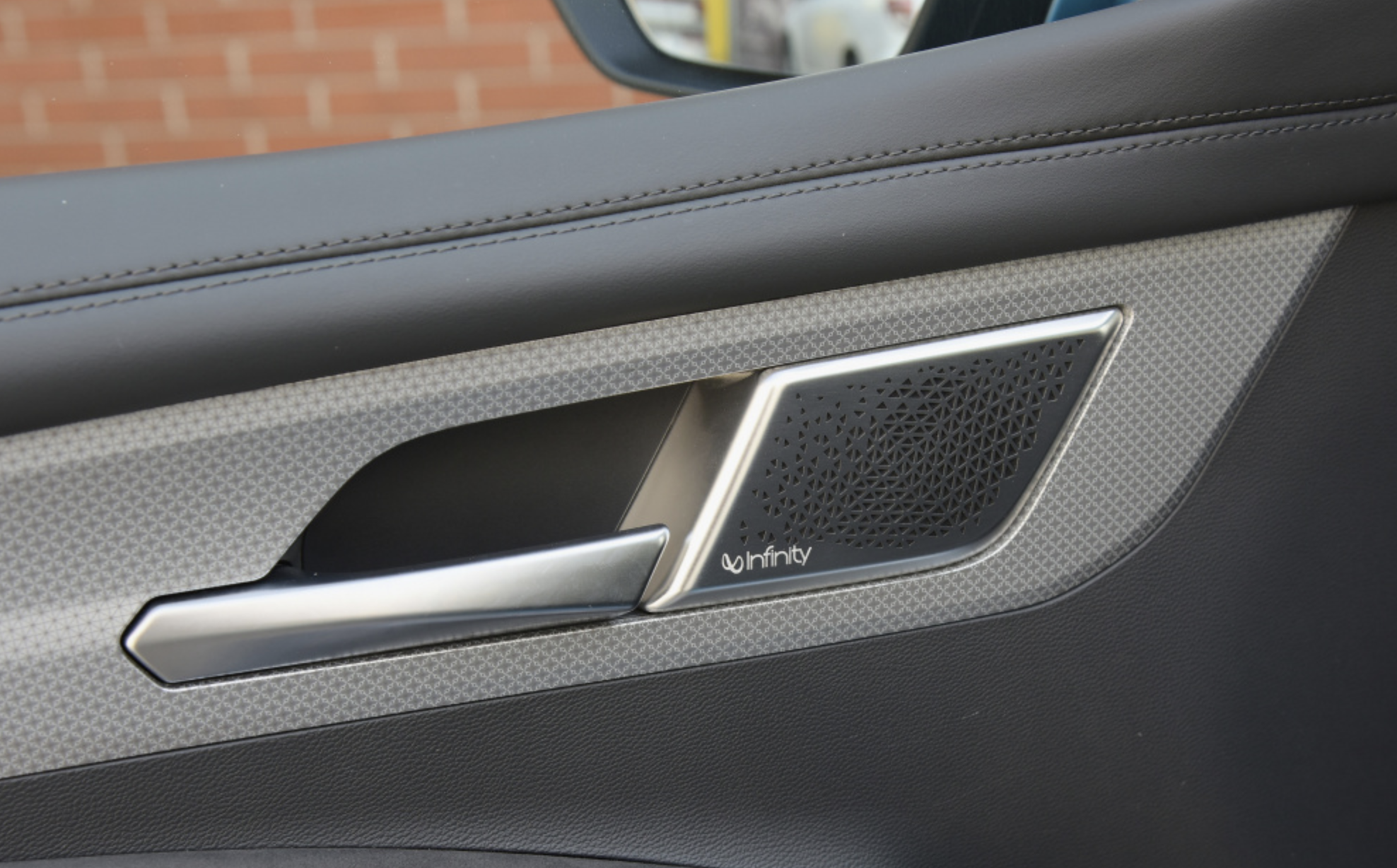 The pattern on the Alfa T interior not only lacks coherence in the overall design of the car, but also has a flaw – the cross pattern on the trim outside the curve easily exposes the inconsistency of the printing location. As those who have done decoration work know, it is best not to use a grid pattern on the tiles at the profile junction, as it is easy to see if one side is more or less than the other once the edge is trimmed.
The pattern on the Alfa T interior not only lacks coherence in the overall design of the car, but also has a flaw – the cross pattern on the trim outside the curve easily exposes the inconsistency of the printing location. As those who have done decoration work know, it is best not to use a grid pattern on the tiles at the profile junction, as it is easy to see if one side is more or less than the other once the edge is trimmed.
These may still be considered average aspects of the overall design, but even excellent features such as the seats of the Alfa T, which have beautiful styling and precise details, are clearly of higher design level than other parts of the car’s interior. The style of the seats and the blue-and-white color scheme are also incompatible with the design style of other parts.
In summary, the interior of the Alfa T seems like multiple designers were each responsible for designing their own area without effective coordination. As a result, the final combination is too rigid, with uneven levels of detail and inconsistent styles, lacking a clear theme and coordination.
This situation has been significantly improved in the Alfa S, as can be seen from the colors alone. The interior of the car I test drove had a theme of deep blue and milk white, with the lower half visually dominated by blue, and the reflective strips not too eye-catching. The upper half is a solid white with better transparency during the day. And this blue-white combination also matches the color scheme of the seats.
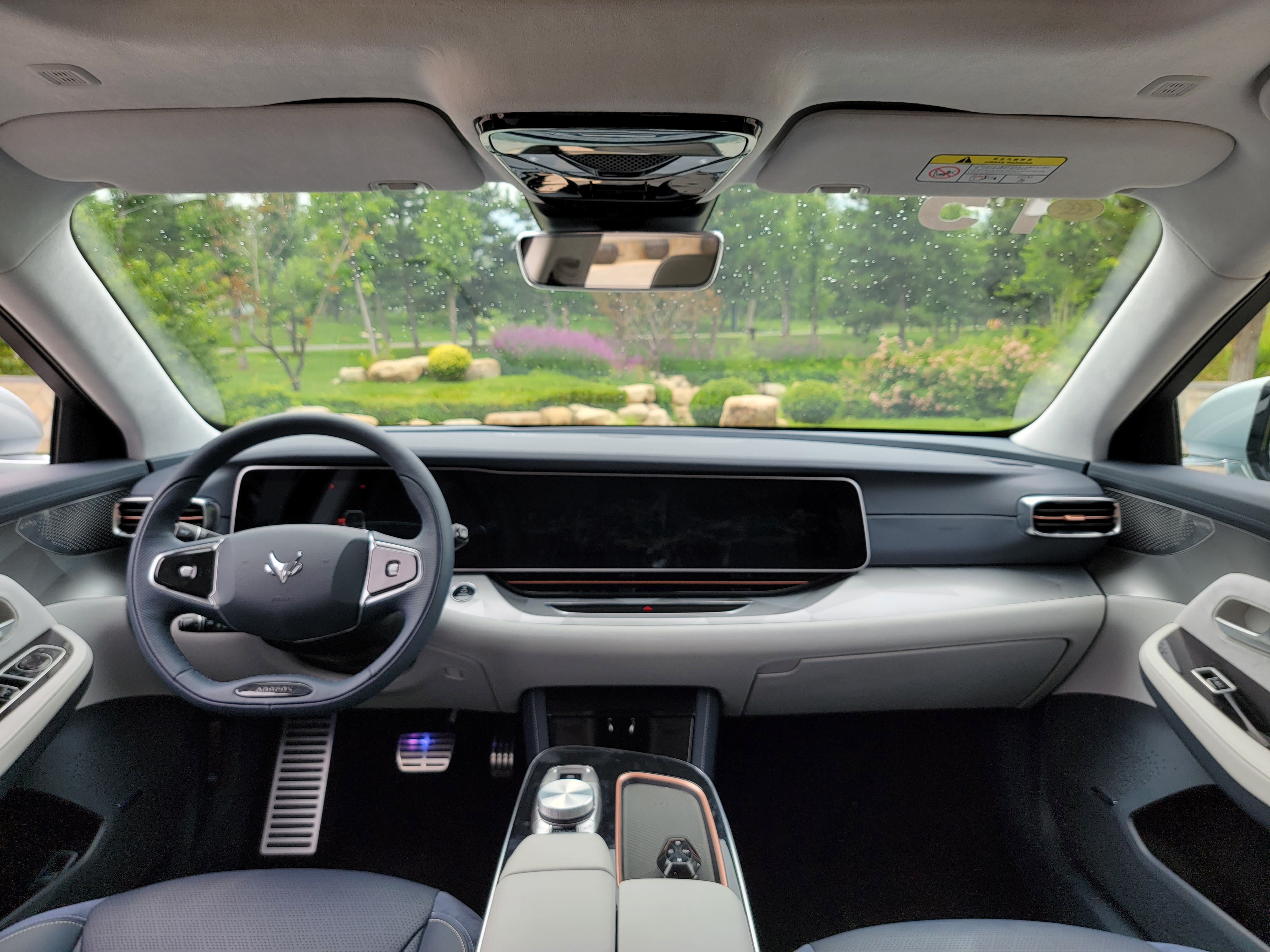
The location of the switches and air vents is matte silver, with some rose gold embellishments being made very restrainedly. This color scheme is reminiscent of the Mercedes EQC and is faultless in taste and luxury.
Then there is the double-screen with the small baffle dashboard, which has echoes of the Mercedes E-Class in its shape. The shape of the air vents has also been adjusted to a rounded rectangle to match the overall interior design, an upgrade over the Alfa T’s design.
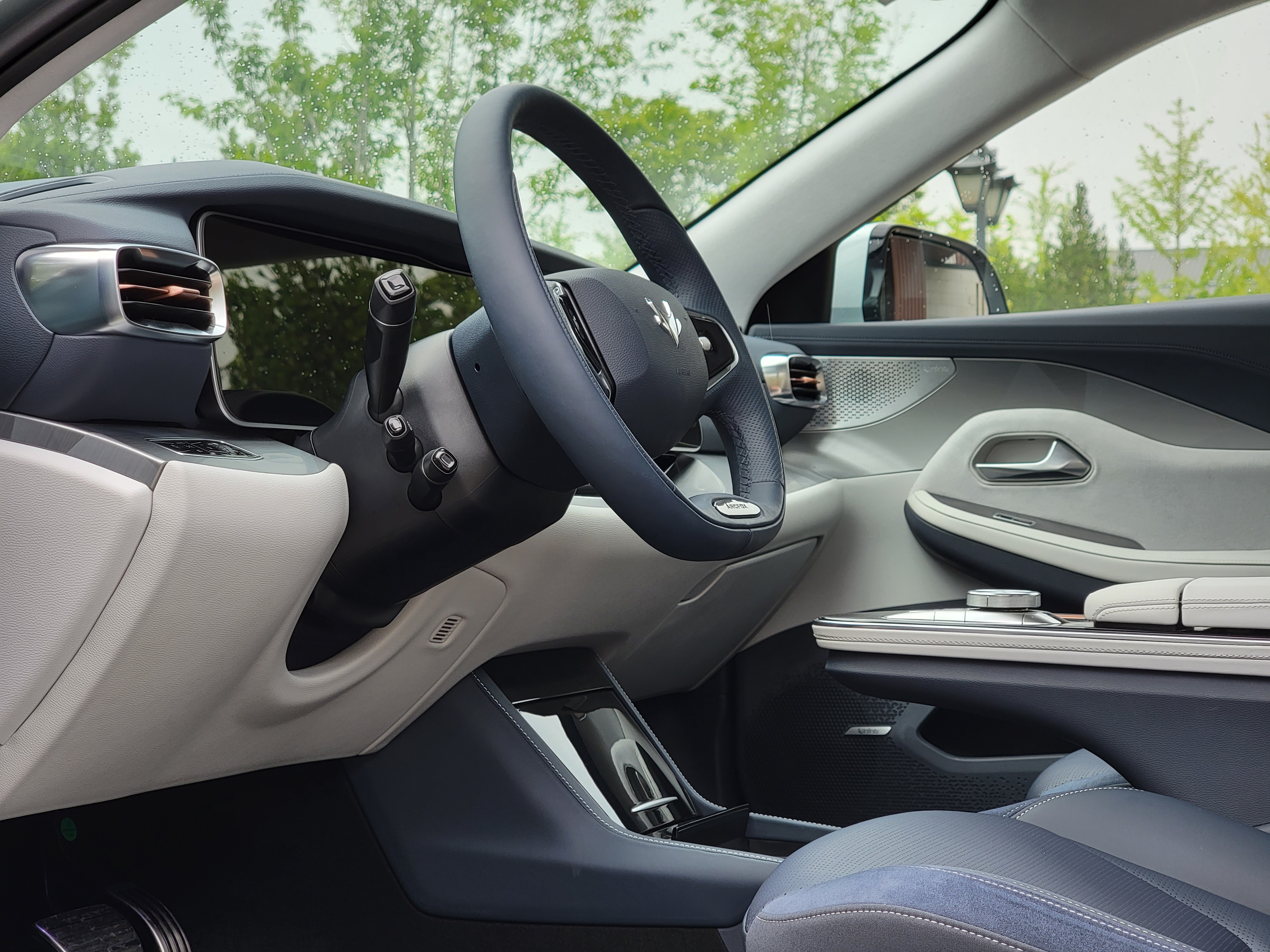
As for the materials used in the interior, there is no need to say more – double-layer laminated glass, rear privacy glass, full suede leather roof extending from the A-pillar to the rear of the car, and embossed leather seats that are all leather, are all rare in the 200,000-yuan price range. On the other hand, the material used on the Alfa T is similar, but the luxurious feel of the Alfa S’s interior under the improved design is evidently more vivid and complete.
Interior design, as one of the four problems mentioned earlier with the Alfa T, is an area that has significantly improved this time. However, the other two problems are not as optimistic.
Familiar InfotainmentThe dashboard design of Alfa Romeo S has undergone significant changes compared to Alfa Romeo T, but the infotainment system used in both cars remains the same. This means that the shortcomings of the infotainment system on Alfa Romeo T can still be seen on this car.
First of all, the most intuitive problem is the UI design, which is more of a traditional car manufacturer style on the main menu of this car’s infotainment system: complex non-solid color backgrounds with inconsistent icons, and each icon has a slightly abrupt font above and below it.
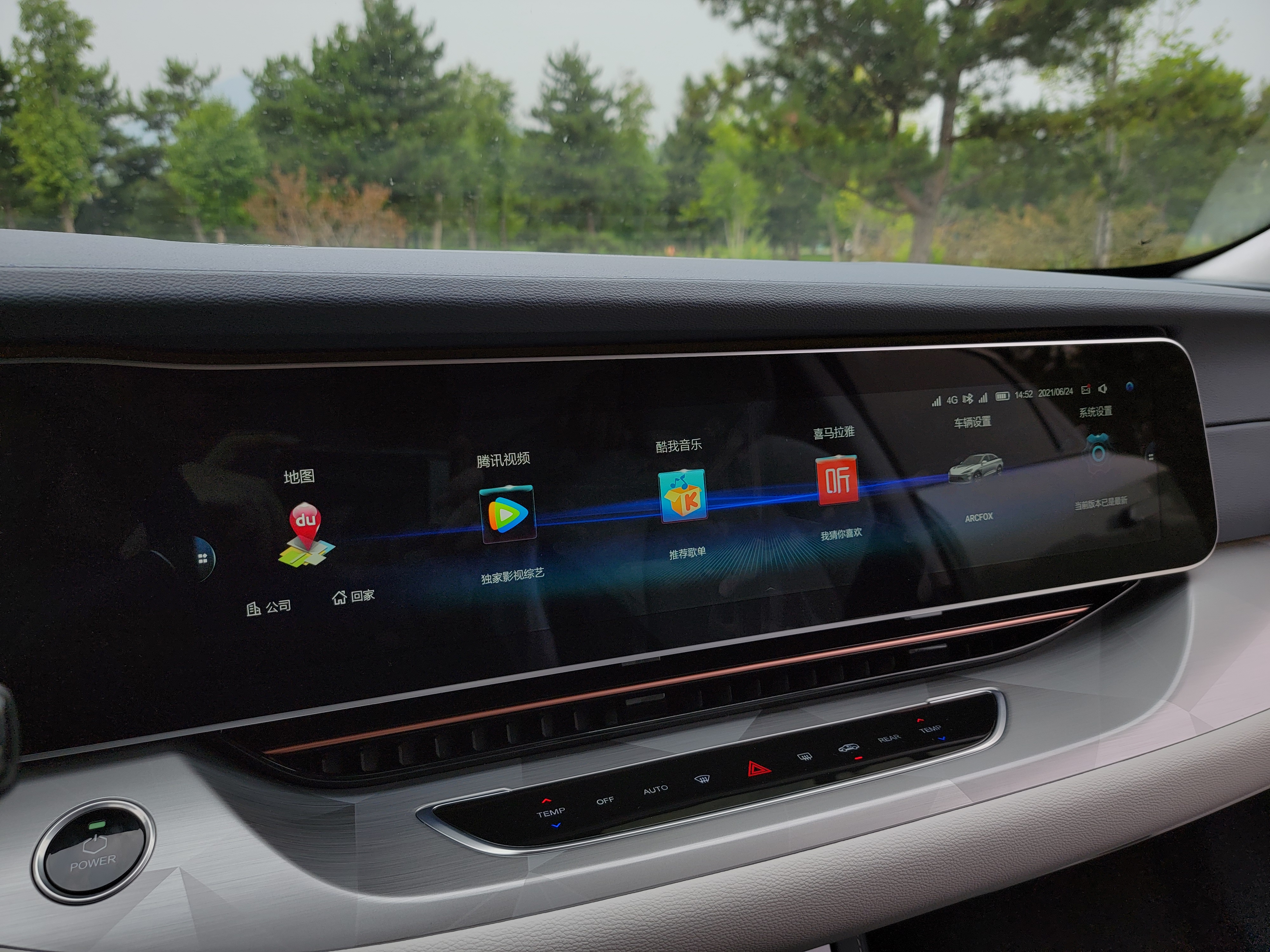
When it comes to the app drawer, the style changes again. All icons here are uniformly shaped as circles. Built-in apps have a blue background and white line pattern, while third-party apps have native patterns.
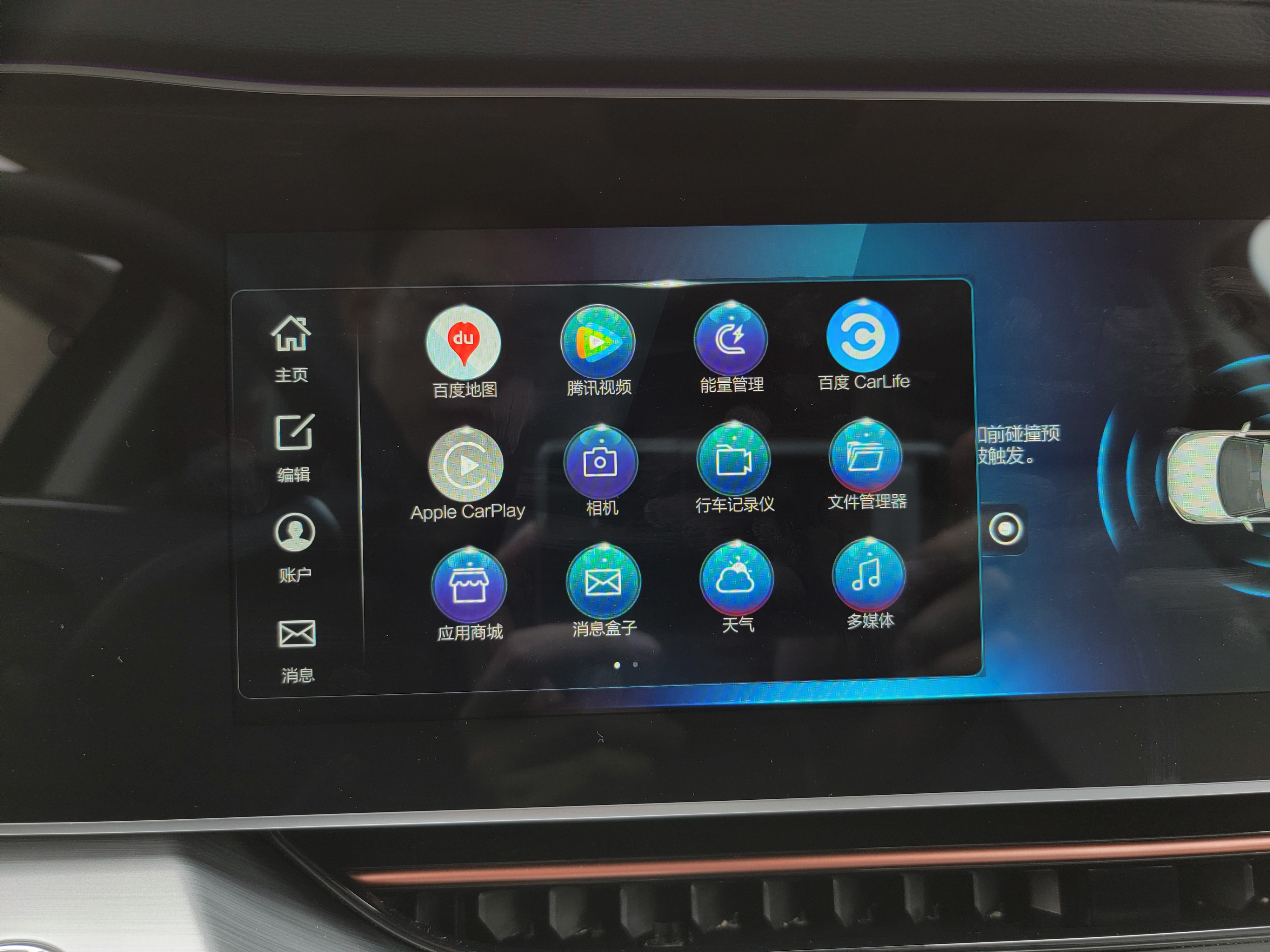
Only when entering the settings menu does everything become “modern”, with function buttons basically becoming rounded rectangles and switch buttons becoming common styles on mobile UIs.
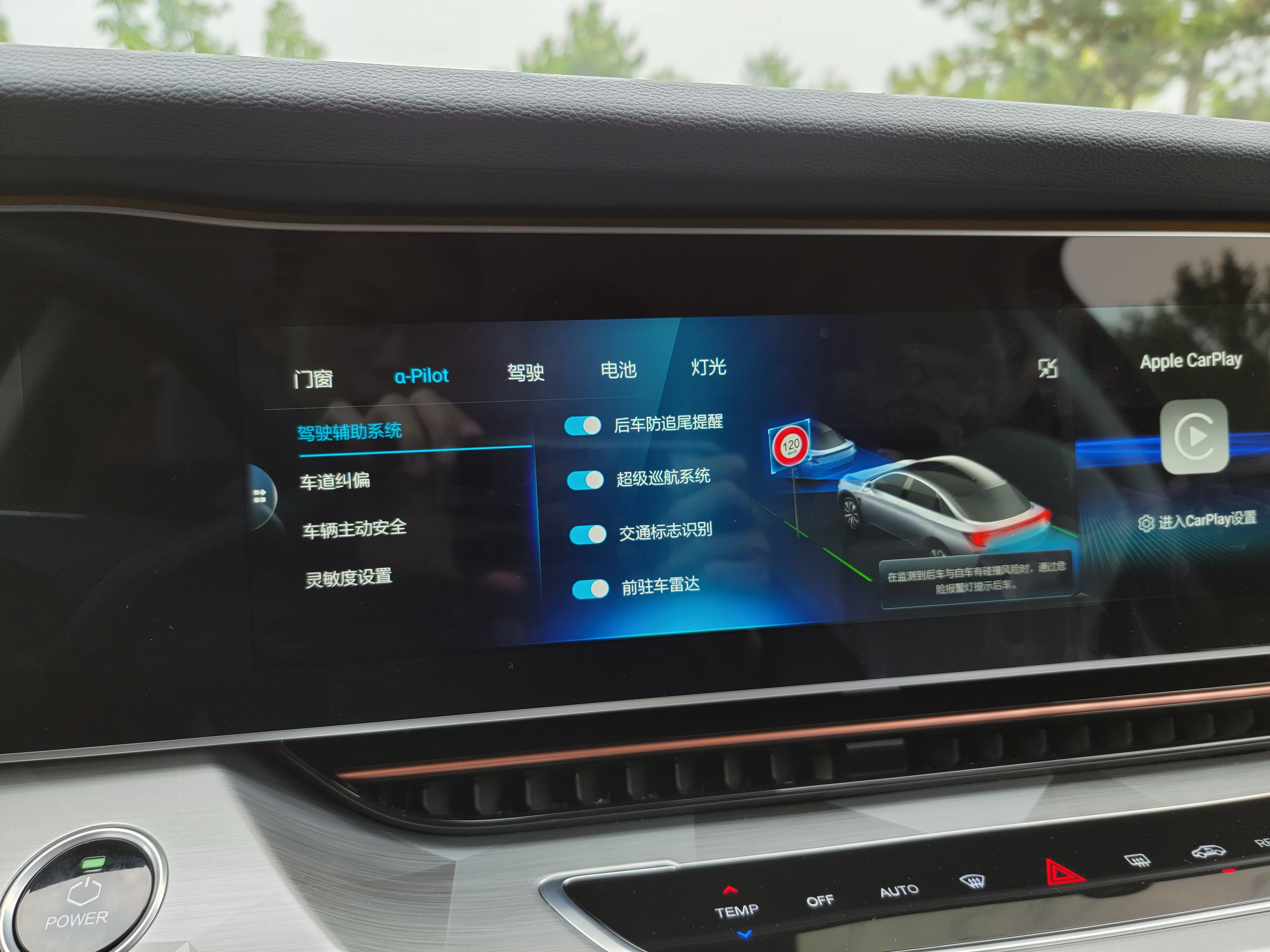
Apart from appearance, another major problem with this infotainment system is its user experience. The instrument panel has some resemblance to Mercedes-Benz MBUX, with several different display modes and content that includes navigation, energy consumption, multimedia, and more. Even the multifunction buttons on both sides of the steering wheel are used for operation. Even for me, a media person who often switches between different types of infotainment systems, the learning curve and usage logic are somewhat complex.
As for the central console, the problem with this fish-shaped screen lies in its lack of convenience in interaction. The excessively long screen even makes me, with a wingspan of 1.82 meters, find it difficult to click on the icon at the far right of the home page without tilting my body. After clicking on the icon, the screen splits evenly into two halves. This brings an awkward situation: if the content is on the left, the remaining part of the home page will be on the right, and the distance for operation is too far; if the content is on the right, it will be inconvenient to look at. When using two apps at the same time, the gesture of switching the content on both sides is also difficult for single-handed operation.In the current trend of touch screen interaction in automobile cabins, the proportion of the impact of the vehicle’s Human-Machine-Interface (HMI) on the overall driving experience is increasing. A poorly designed HMI system can make it more difficult and time-consuming to operate the car.
Therefore, we can see that many new car manufacturers have simplified the menu hierarchy in their HMIs, with the most commonly used features, such as navigation, directly displayed on the home screen, and a DOC bar placed on the side of the screen closest to the driver. This makes it easier and quicker to switch between functions, to improve convenience, which was one of the main areas that I expected the Alfa-S to improve before I saw it.
The Alfa-S uses the same advanced driver assistance system (ADAS) that is used in the Alfa-T, and their performance is the same. While the adaptive cruise control (ACC) system is relatively smooth in acceleration and deceleration, its lane keeping ability is average, with the vehicle tending to drift on larger curves. One good feature is that there is a visual UI, and the ADAS status is displayed in the HUD.
Appearance is important
Here are some pictures of the Alfa-S, which may help set your expectations of the vehicle’s size.
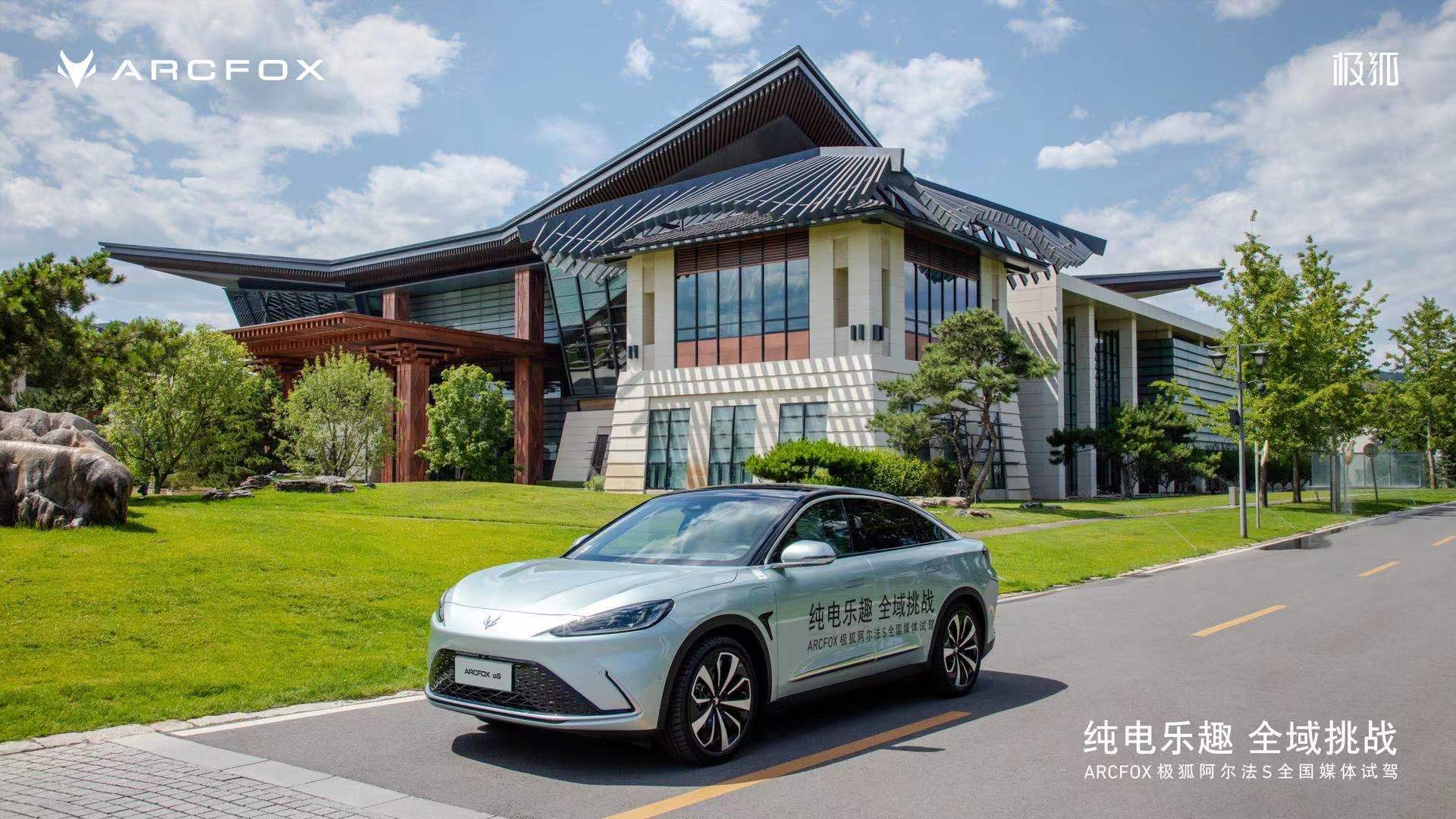
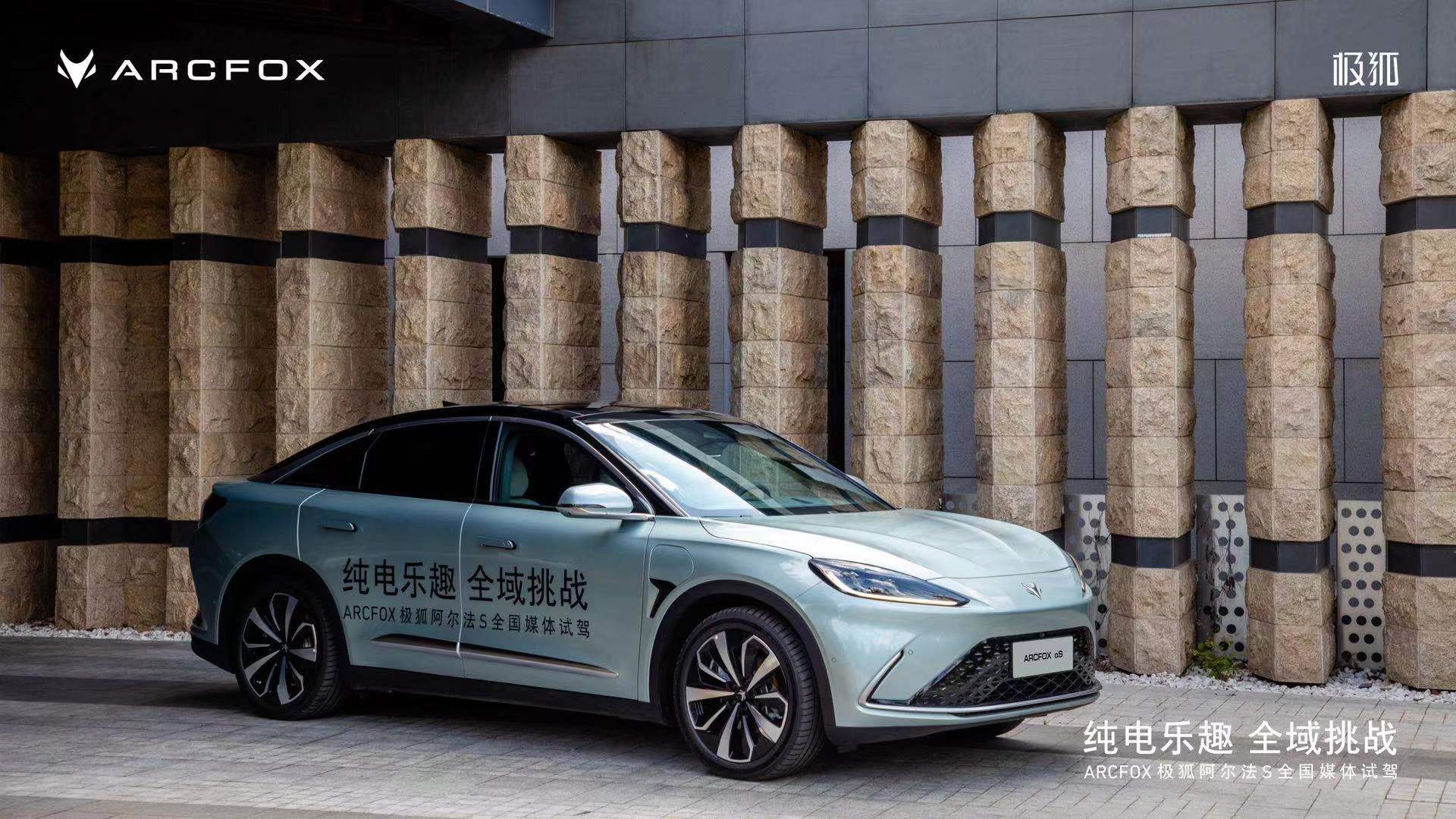
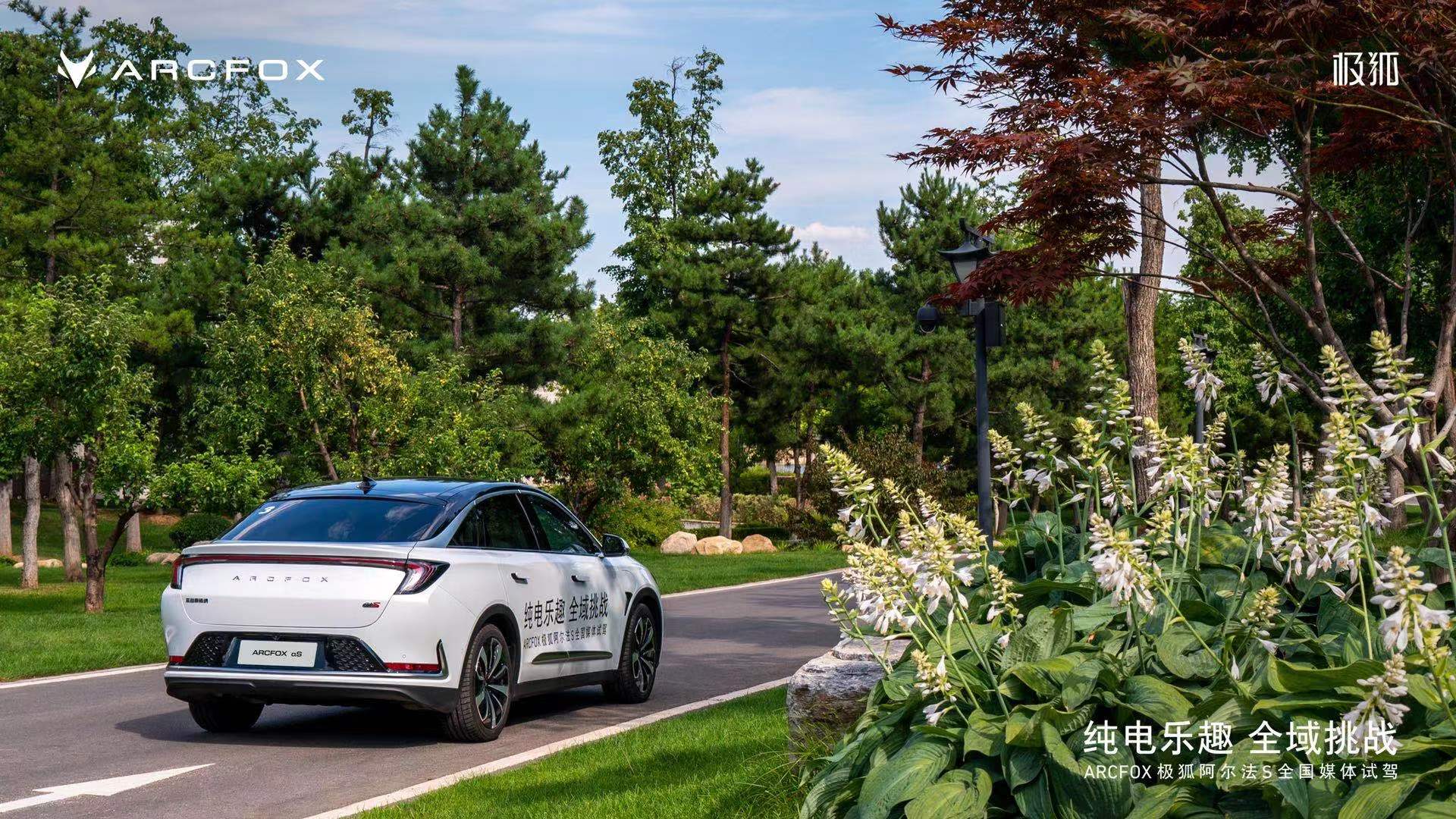
After seeing these pictures, you might think that the Alfa-S is not a large vehicle. However, in reality, the car’s dimensions are 4,930 × 1,940 × 1,599 mm. A comparison with an A8 parked next to the car (shown below) really drives home how large the vehicle actually is.
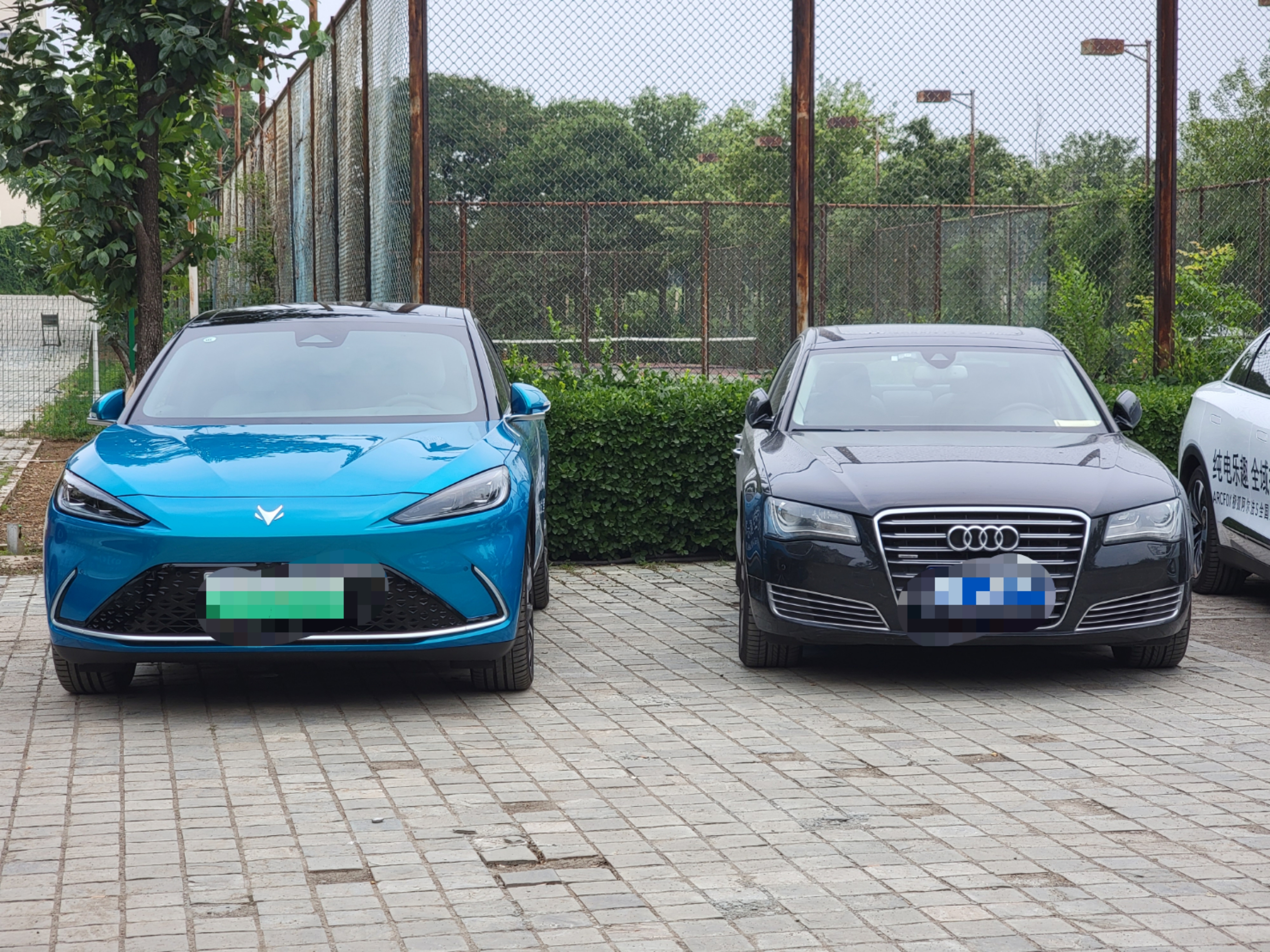
Through analysis, I think the reason why people may not perceive the car’s size is due to the following:
- The chassis’ ground clearance is high
- The height of the vehicle is high
- The thickness of the body below the windows is large.Therefore, from the perspective of the car “figure”, the Alfa Romeo S with an uneven aspect ratio belongs to the type that neither appears wide nor long. In addition, the thickness of the body increases the visual center of gravity of the entire vehicle, which are all deductions for the car’s appearance. Elements such as black floating roof, chrome roof contour lines, and through-type taillights are also prone to aesthetic fatigue in today’s highly homogenized industry.
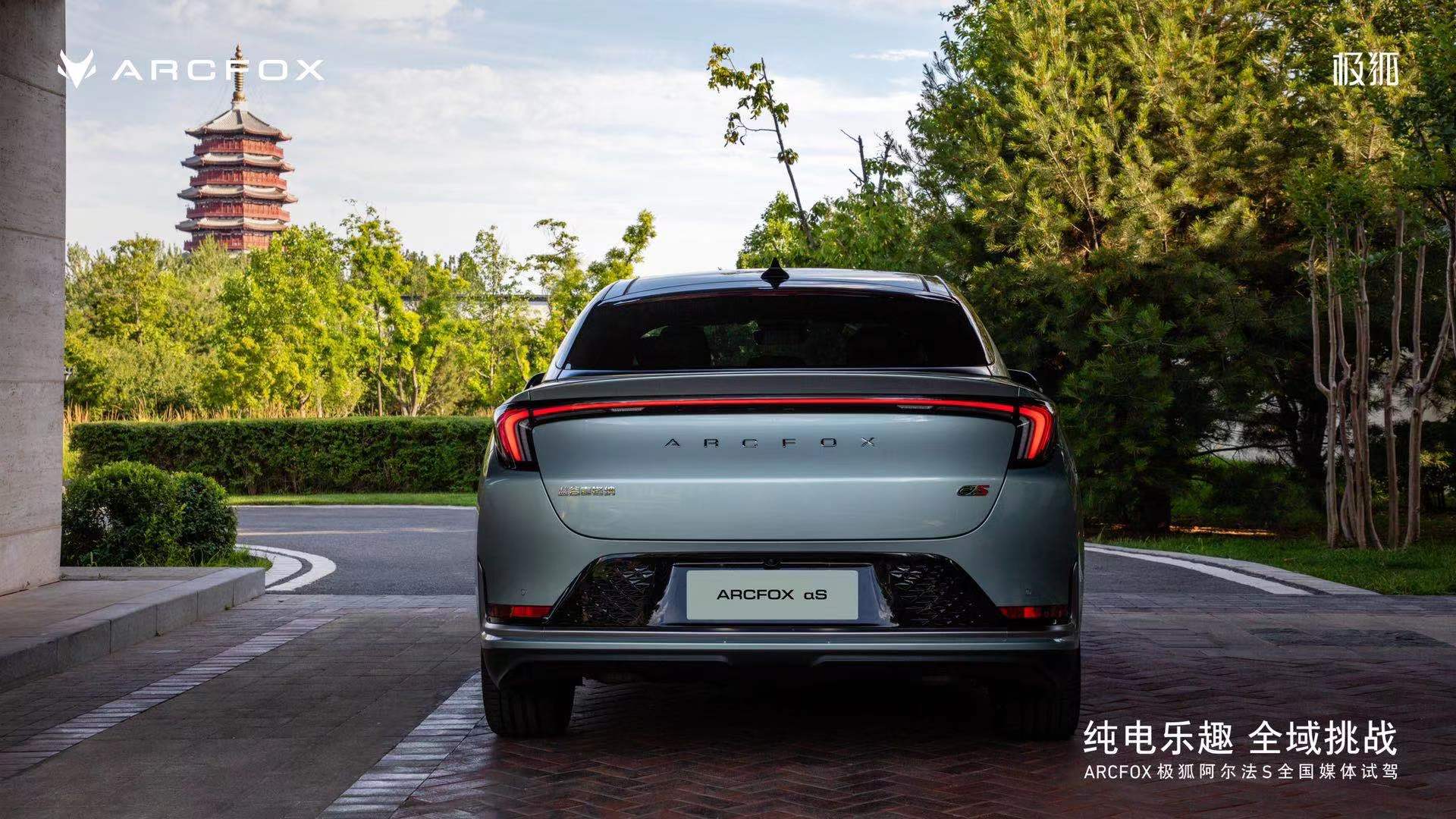
Although I can still feel that this is a product with excellent craftsmanship and materials from details such as the effect of the front and rear light groups, the paint level, and the body gap, it’s just like a person with good skin but obese figure, these excellent details are not important anymore under the unattractive appearance. This is the place where the Alfa Romeo S made me feel very regretful and sad, as liking beautiful things is human nature, and this is particularly evident in car consumption.
The continued hot sales of the new generation Nissan Sylphy and the BYD Han series, which has almost the same sales volume as the Tang series but with less advanced power sources and car connectivity technology, are vivid examples of the current market.
The protagonist yet to be unveiled and the road filled with doubts
Above, we have discussed the ordinary version of Alfa Romeo S. In fact, everyone’s focus on JAC is still on the Alfa Romeo S Huawei HI version that exploded across the network a few months ago.
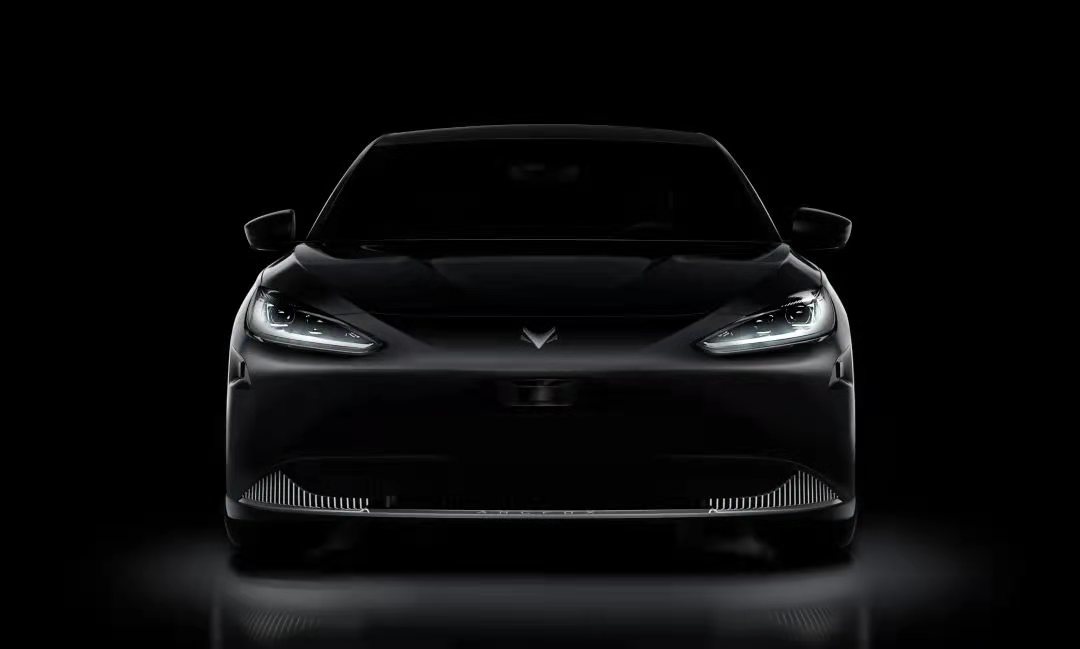
Huawei ADS autopilot scheme with 3 LiDARs combined with Hongmeng OS vehicle system can be said to have turned the short board of the Alfa Romeo S in intelligence into a bright spot. The 800V electric platform and 200kW fast charging speed further enhances the already excellent endurance of the Alfa Romeo S. The 473kW front asynchronous and rear permanent magnet electric motor power system brings the Alfa Romeo S’s 0-100km/h acceleration to the level of 3.5 seconds, ranking first among independent brands.
Undoubtedly, the Alfa Romeo S Huawei HI version will be a model with outstanding capabilities in all aspects. However, at the same time, we also need to see that its price has also reached 388,900 and 429,900 yuan, and there are already many excellent products to choose from on this high stage.
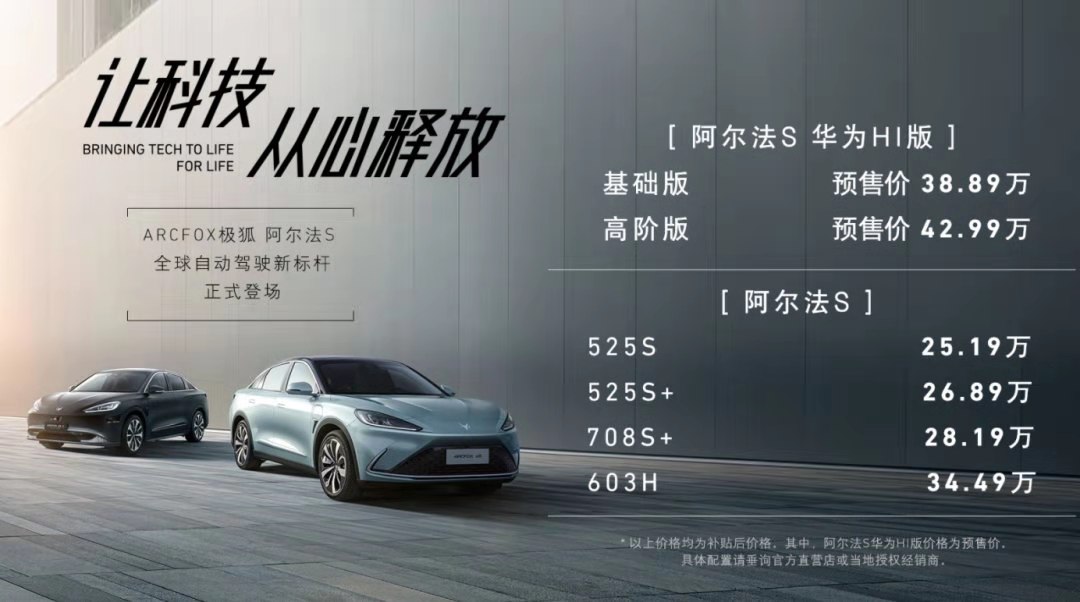 Under the halo of Huawei, this car still faces two extremely harsh and inescapable issues: it retains the design of the regular version of the Alfa S and the FOX LOGO is the root of some people’s color blindness.
Under the halo of Huawei, this car still faces two extremely harsh and inescapable issues: it retains the design of the regular version of the Alfa S and the FOX LOGO is the root of some people’s color blindness.
Every time I think of this, I sink into contemplation because that’s just the reality.
I can say with certainty that the Alfa S is a good electric car, as it embodies many of the luxurious characteristics of an electric car: excellent driving feel, generous materials, outstanding NVH and space performance, and a range that is among the best in its class. The Huawei HI version is a landmark product.
But I cannot deny that in comparison with its competitors, Alfa S is a product that lacks charm, whether it is in terms of the brand or the appearance.
“Heroes do not ask for their origins”, “ability is more important than education”, and “finding a partner with a good personality is more important than looks” have always been values that encourage rather than guide. Many things in life involve a mix of rationality and emotion, and buying a car is no exception. When there are choices available, nobody really doesn’t care about brand and appearance.
Final Thoughts
On the way back, I recalled the development of China’s new energy market in recent years, during which every player, be it a new force or BYD, has undergone enormous scrutiny. None of them have achieved their success without perseverance in the face of questioning and continual self-improvement.
The one that I found most difficult is XPeng Motors, as I initially thought that it was a company that would fail on the design aspect when G3 first launched. But the subsequent P7 has undergone a radical transformation and dealt a heavy blow to all of its doubters.
There are no ifs in life. What truly makes you regretful is choosing to be lazy when you should have worked hard, and not working to your fullest when you should have. We often say “do our best”, but only those who give their all in the process can truly face the results without regrets. The most regrettable thing in life is not “I can’t do it”, but “I could have done it”.
In addition to putting more effort into brand operations, the next model of FOX must make a significant improvement in exterior design, as the brand has used up two valuable opportunities on the Alfa T and Alfa S.
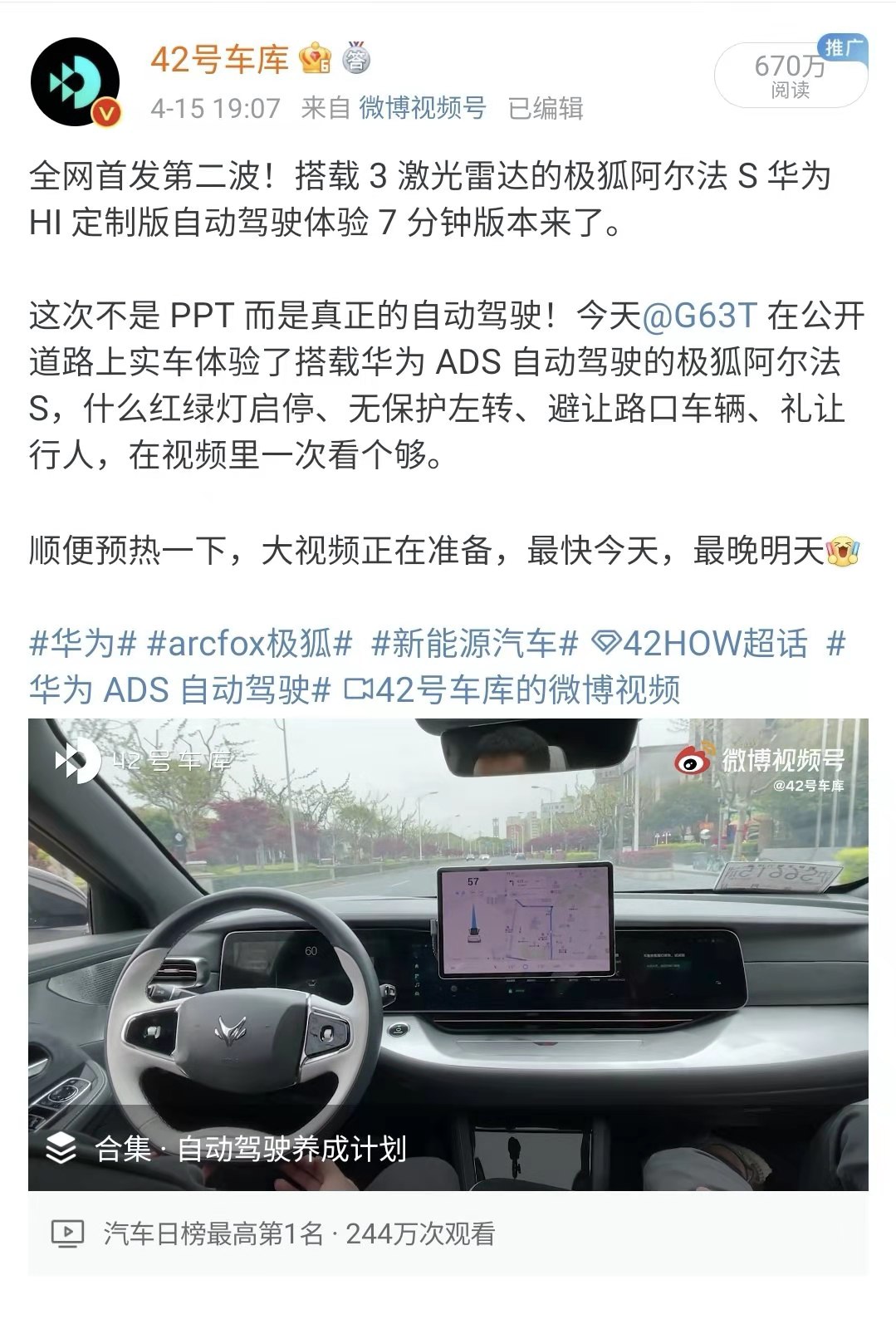
The self-driving video of the Huawei HI version of the Alfa S has stunned the world, bringing FOX to the attention of many in the new energy market. This is a valuable opportunity that many new energy brands seek, but if this car is the pinnacle of FOX brand, it would be a shame.
This article is a translation by ChatGPT of a Chinese report from 42HOW. If you have any questions about it, please email bd@42how.com.
